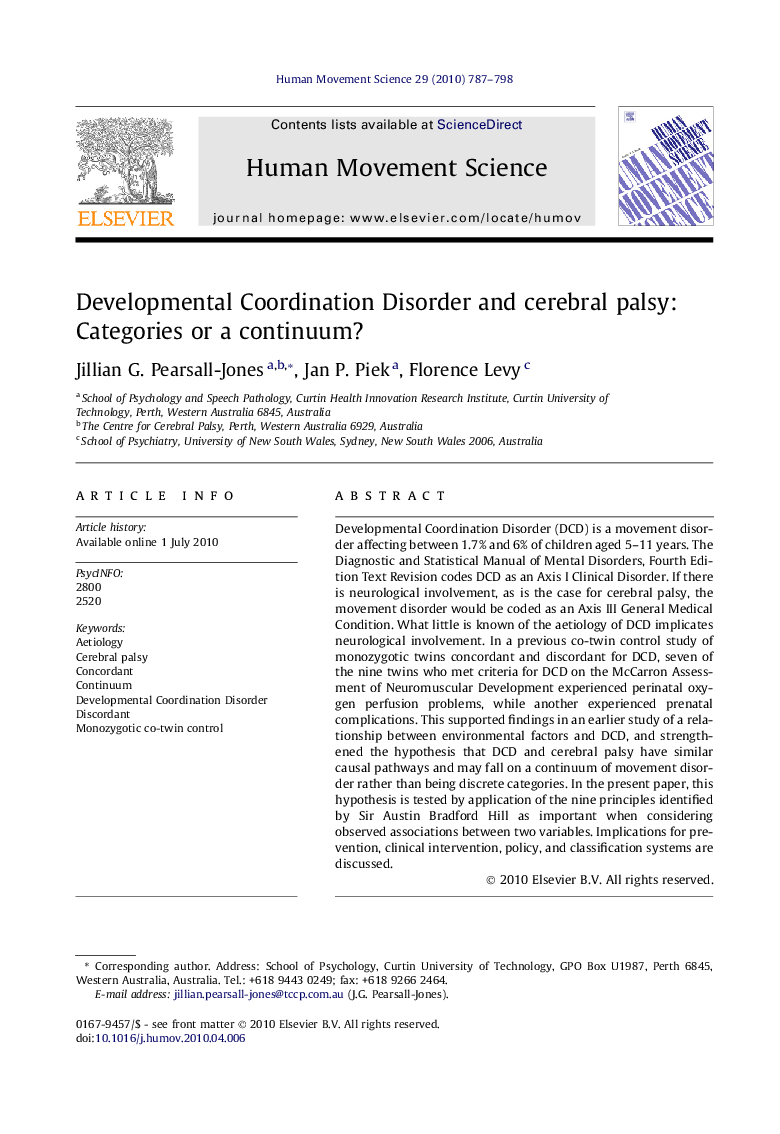| Article ID | Journal | Published Year | Pages | File Type |
|---|---|---|---|---|
| 928714 | Human Movement Science | 2010 | 12 Pages |
Developmental Coordination Disorder (DCD) is a movement disorder affecting between 1.7% and 6% of children aged 5–11 years. The Diagnostic and Statistical Manual of Mental Disorders, Fourth Edition Text Revision codes DCD as an Axis I Clinical Disorder. If there is neurological involvement, as is the case for cerebral palsy, the movement disorder would be coded as an Axis III General Medical Condition. What little is known of the aetiology of DCD implicates neurological involvement. In a previous co-twin control study of monozygotic twins concordant and discordant for DCD, seven of the nine twins who met criteria for DCD on the McCarron Assessment of Neuromuscular Development experienced perinatal oxygen perfusion problems, while another experienced prenatal complications. This supported findings in an earlier study of a relationship between environmental factors and DCD, and strengthened the hypothesis that DCD and cerebral palsy have similar causal pathways and may fall on a continuum of movement disorder rather than being discrete categories. In the present paper, this hypothesis is tested by application of the nine principles identified by Sir Austin Bradford Hill as important when considering observed associations between two variables. Implications for prevention, clinical intervention, policy, and classification systems are discussed.
